By Ha Eun (Lina) Kwon, GVJCI Social Media and Community Outreach Intern
Hello everyone! Today I would like to share this super cute and simple craft that you can make with your friends and family. These pretty origami dolls are wearing a Kimono inspired outfit made out of patterned origami paper! They are perfect gifts for many occasions such as birthdays, Valentine's Day, Mother's Day, Hinamatsuri, anniversaries and even weddings. Make your card stand out on these occasions by using origami dolls and show your sincerity! All you need to do is attach them to the front of your cards and decorate them. They can also be used as bookmarks or as paper puppets by taping a stick onto the back of the puppets.
If you can get some origami paper in hand that has one or two colors or a pattern, it gives the dress a simple two toned effect. For the head, you need to cut out a white cardboard to make a round head and a stick-straight body. You'll need 3 sheets of square origami paper for the kimono. Now, shall we get started?
Instructions:
Step 1: Glue the stick body onto the back of the head and place the collar piece on the back of the girl's neck about halfway, so that it has even lengths each side. Glue the folded collar piece. Then, fold the even lengths of the collar piece to form a V shape, as shown in the image.
Step 2: Start preparing the kimono. Cut your first solid color origami paper in half and fold the top edge (1 cm). Flip the paper over and fold it halfway down, towards the end of the folded edge.
Step 3: Place the girl in place and fold the top corner of the kimono over to form a V shape, as shown in the image. Fold the other top side the same way to complete the shoulder zone. Make sure that the other collar piece you've already attached is still showing above the kimono collar.
One thing to note here is that kimono is ALWAYS worn left over right, with the exception only of in death. Why must this rule be followed? In Japan, female corpses are usually dressed up in Kimono with the right side covering the left side. The corpse is purposely designed to dress this way to indicate that the person is already dead. Therefore, if you don’t want to be mistaken as the walking dead, the right collar of your kimono should always come underneath the left.
Step 4: Fold ½ of the kimono to the right. Fold both left and right sides together to make it look even.
Step 5: Take another solid color origami paper and fold it from left to right (about 2cm). Put glue under it, seal it and cut the piece out with care. Now your obi’s ready!
Step 6: Glue the obi to the back of the kimono, around the waist area. Roll it and glue it together at the back of the girl.
Step 7: Almost there! Now prepare the sleeve piece. Take a patterned origami paper and fold the top edge (about 2.5cm). Put some glue under it, fold it again and cut the piece out.
Step 7: Almost there! Now prepare the sleeve piece. Take a patterned origami paper and fold the top edge (about 2.5cm). Put some glue under it, fold it again and cut the piece out.
Step 8: Place the sleeve piece on the back of the girl's shoulders about halfway, and fold the sleeves accordingly. Then glue into place.
(Optional) You could use a black cardstock paper and make a wig out of it, just like the one shown below.
Step 9: Check your doll. Move anything into place as needed and allow her to dry completely. She’s now ready to be used as a decoration!
In Use: (Or as a bookmark!)
That's it! I hope you had fun making this simple and lovely Japanese paper doll from origami!

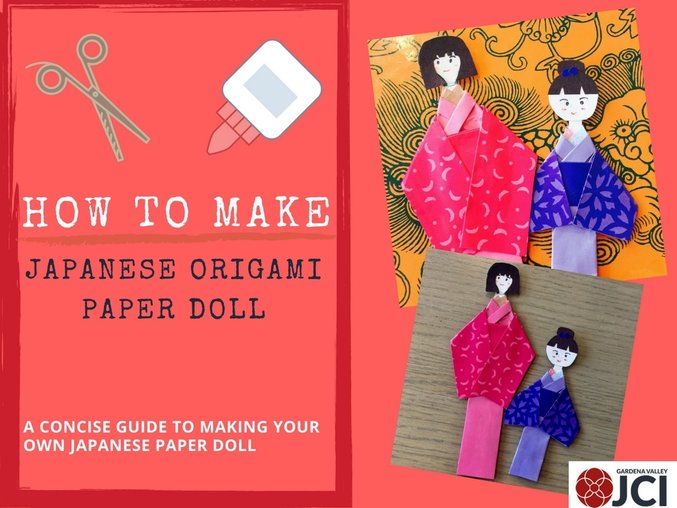
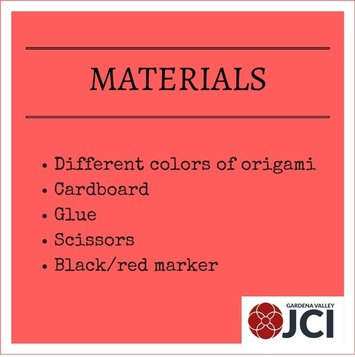
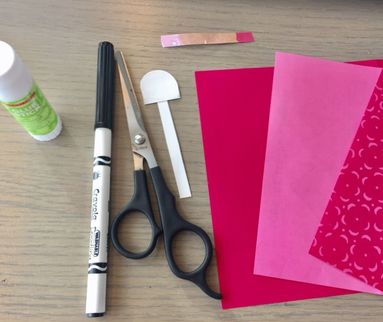
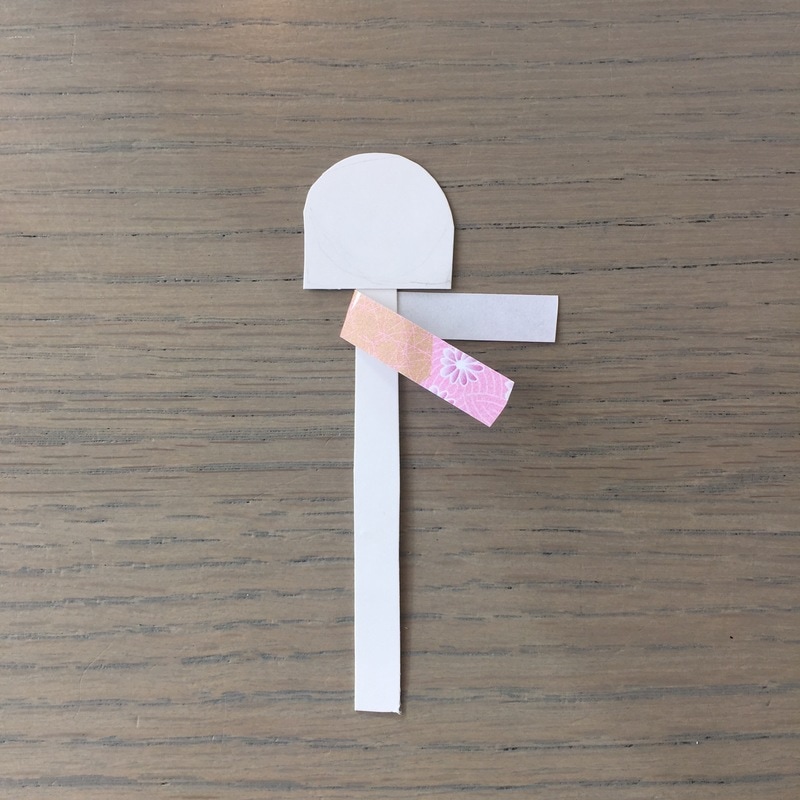
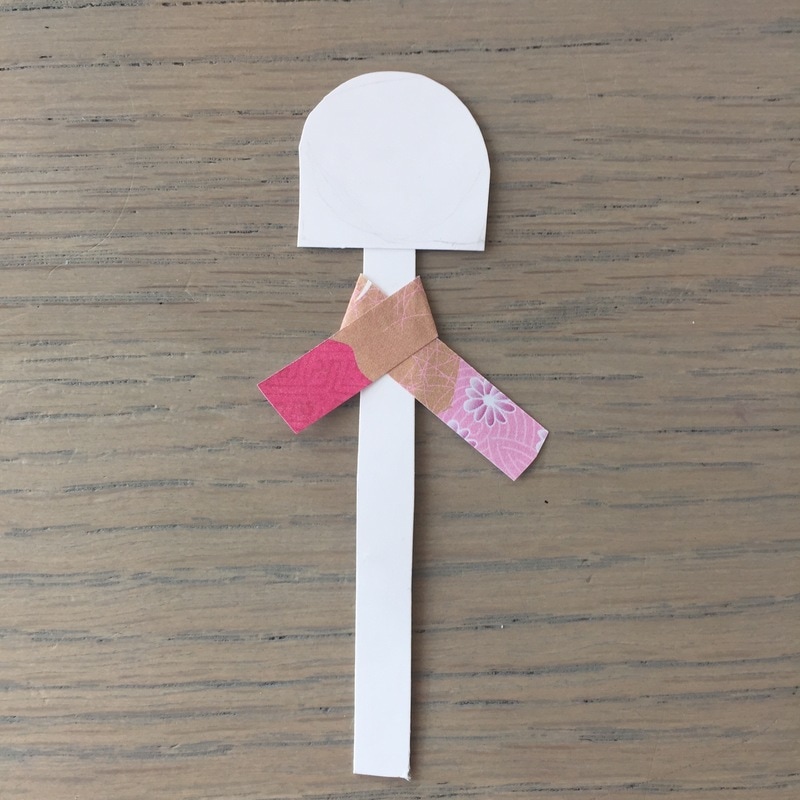
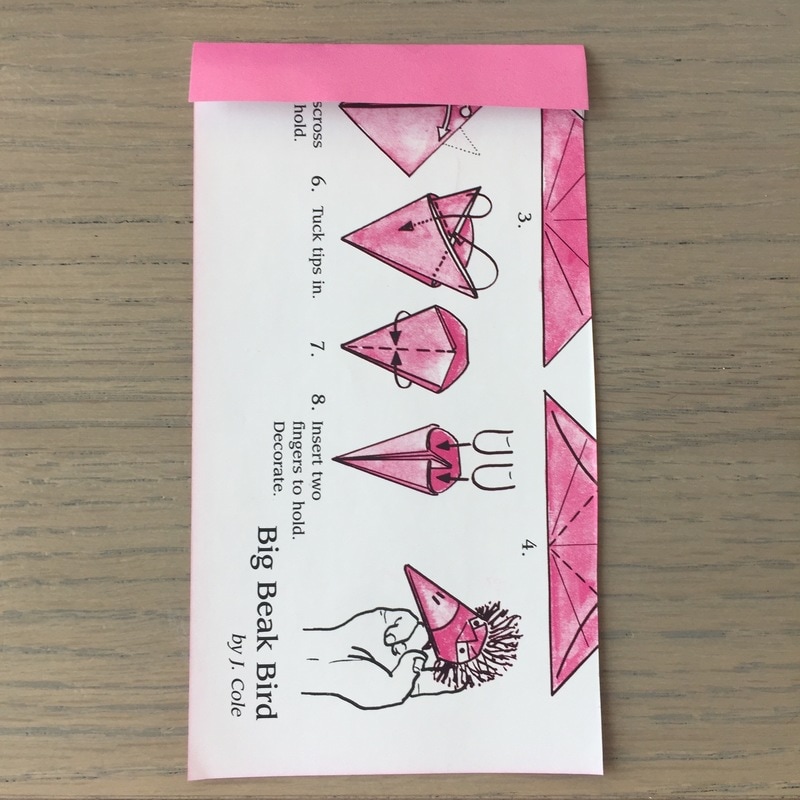
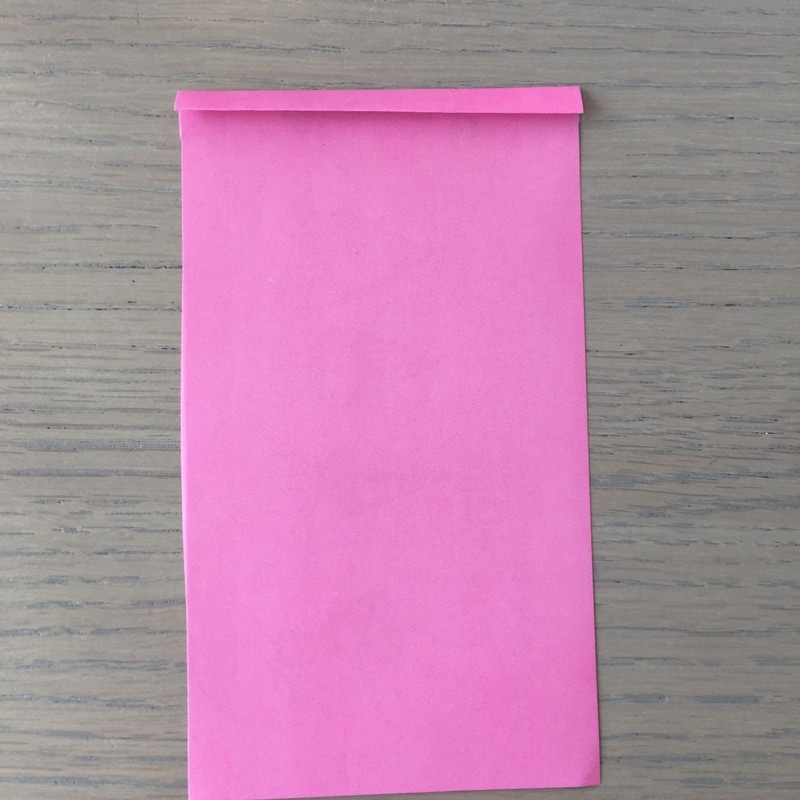
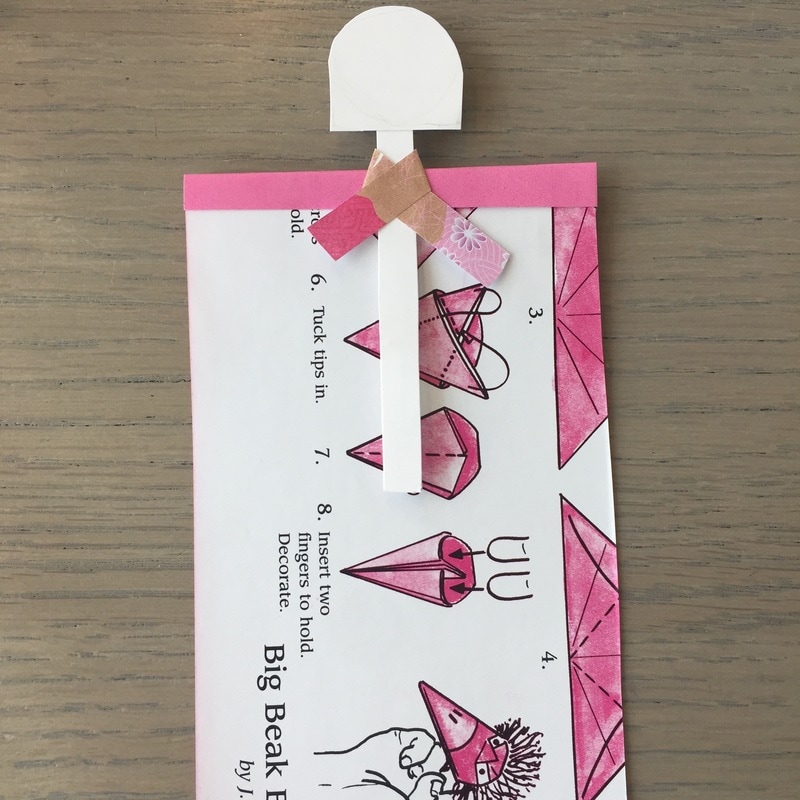
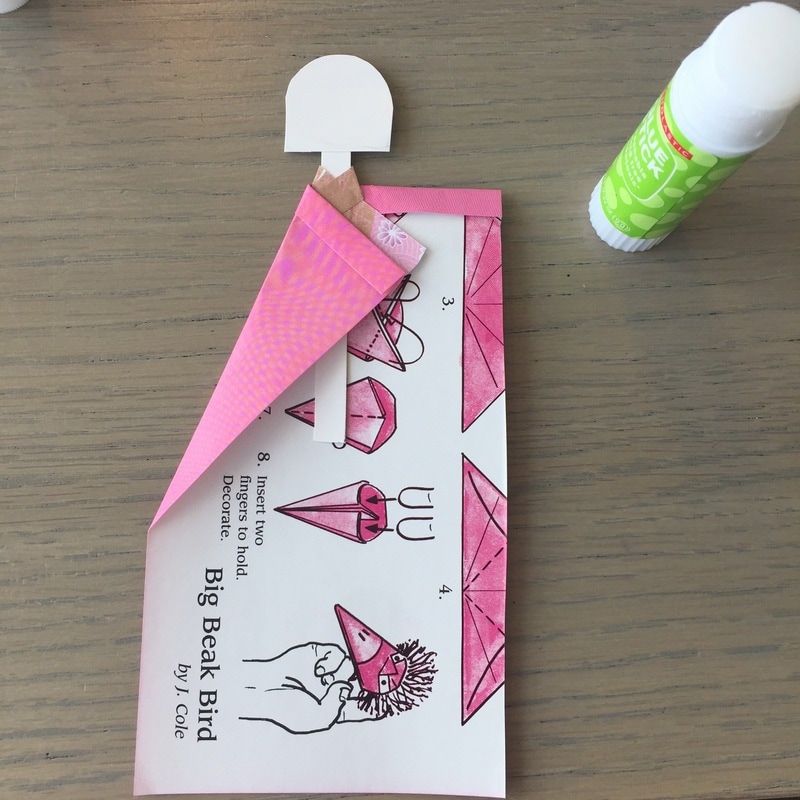
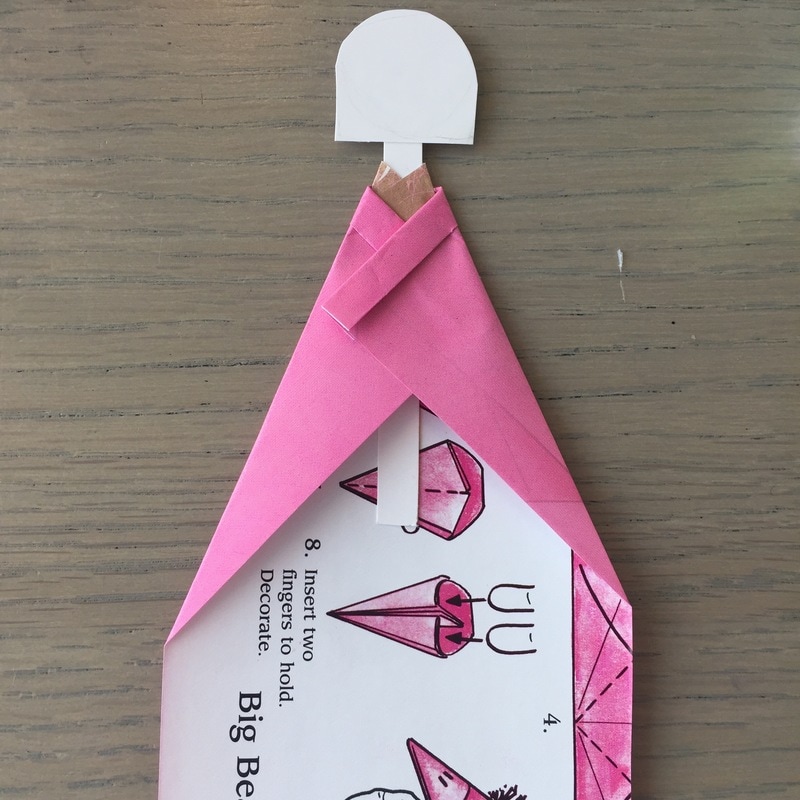
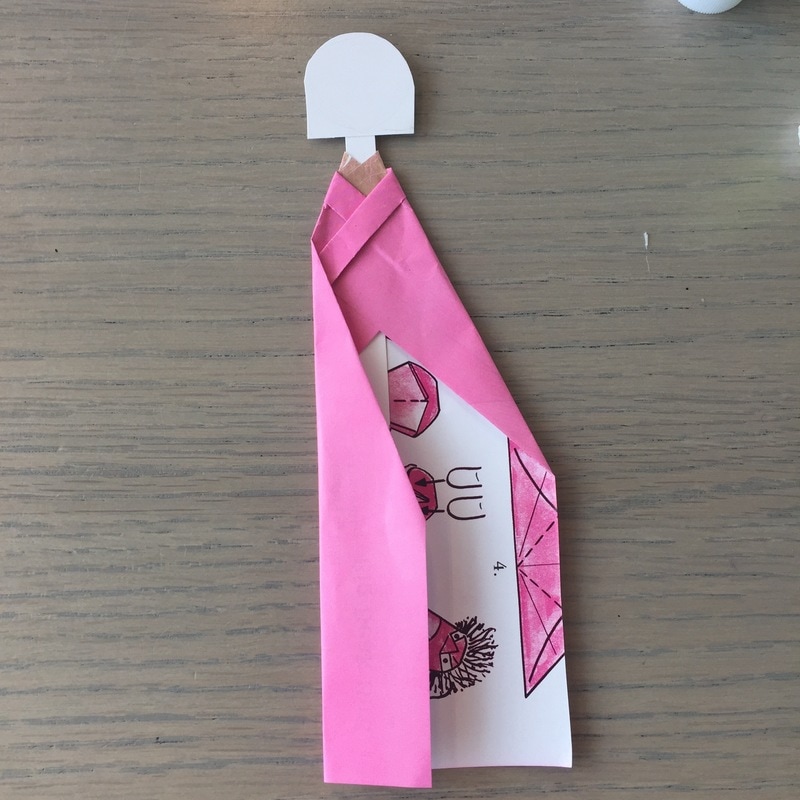
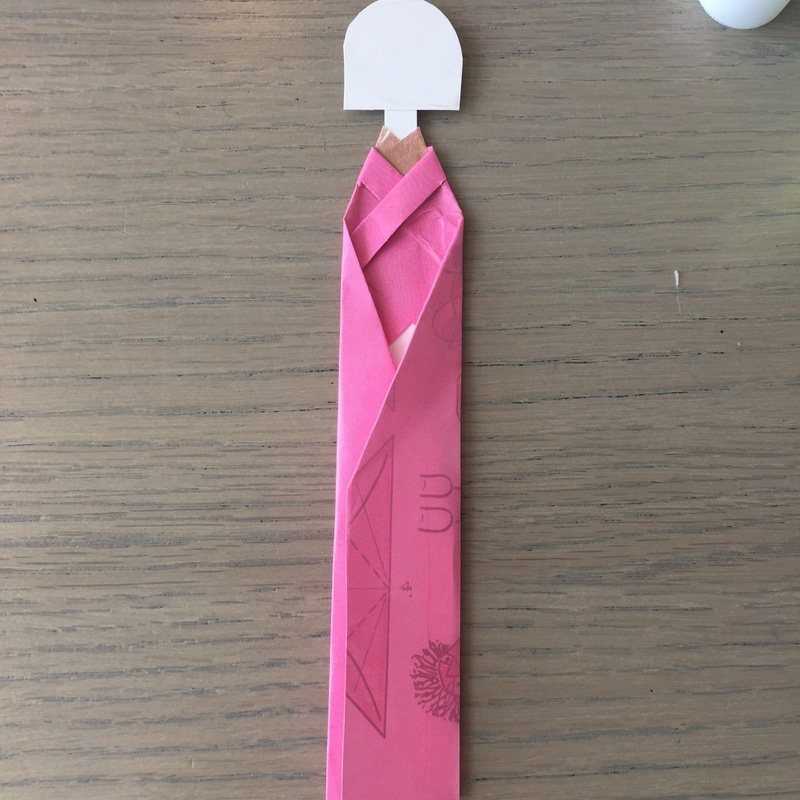
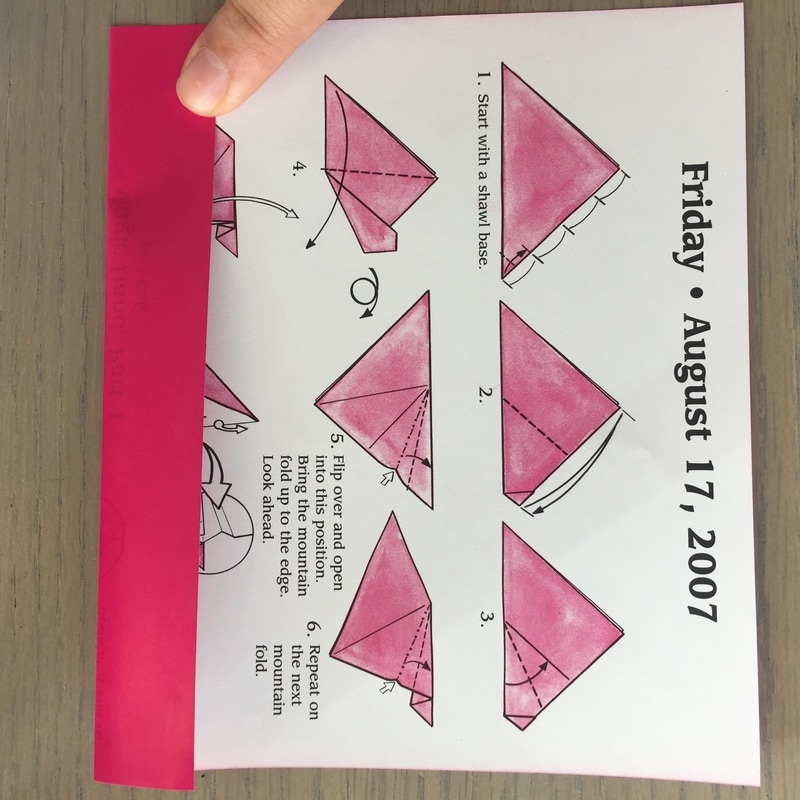
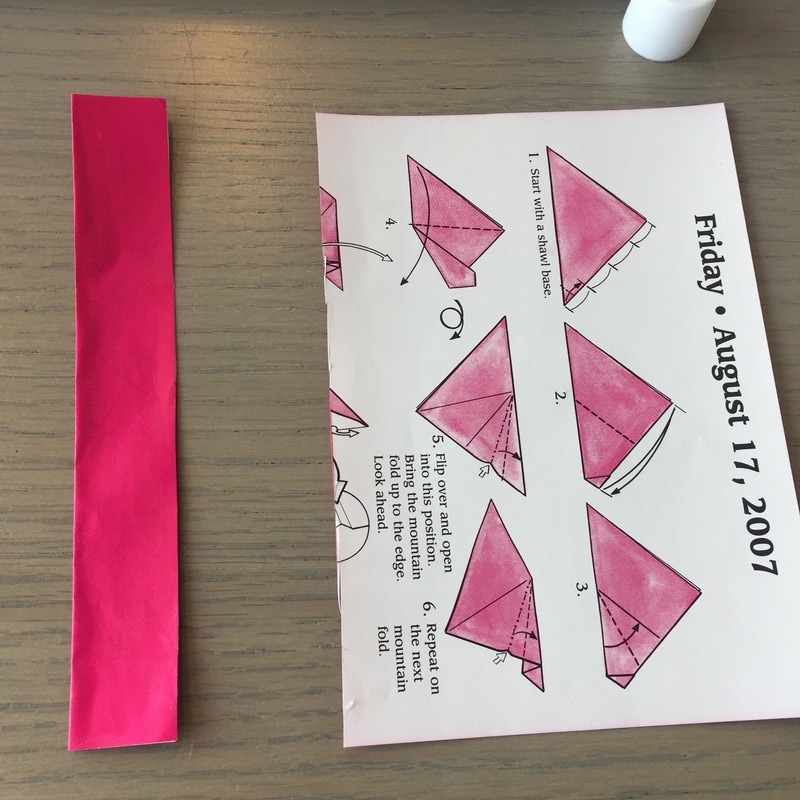
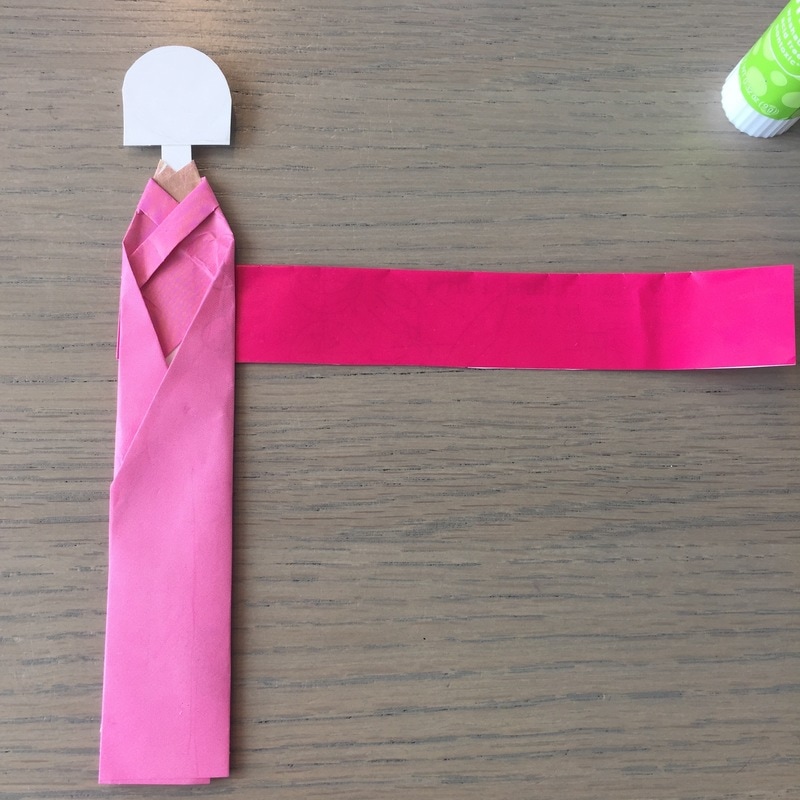
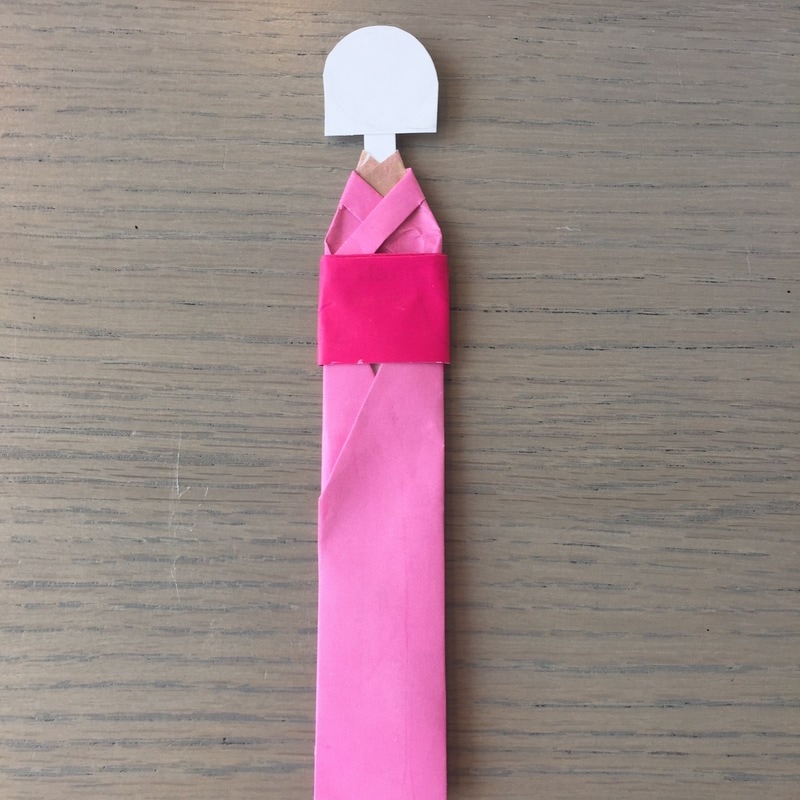
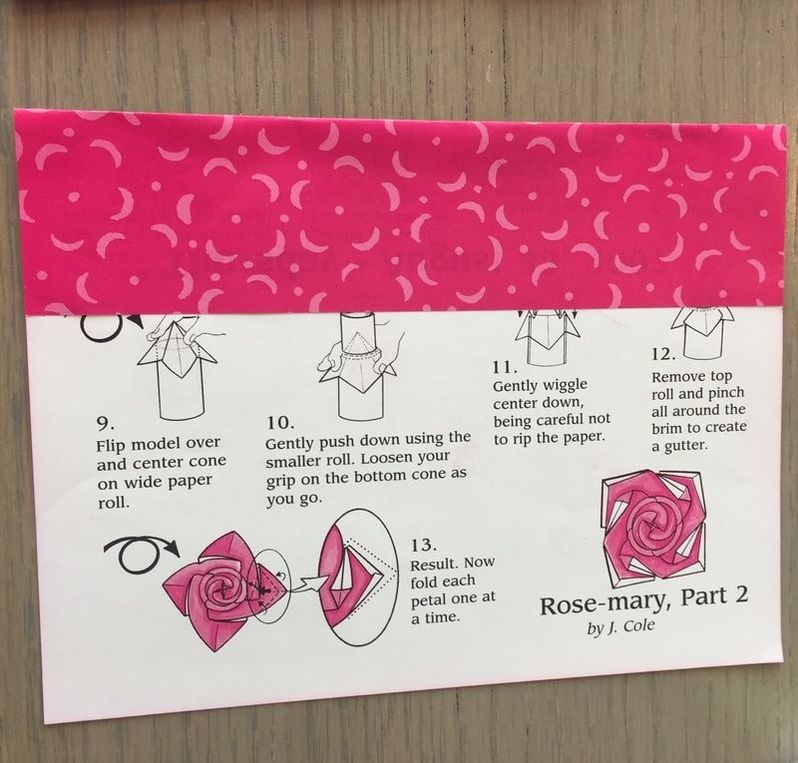
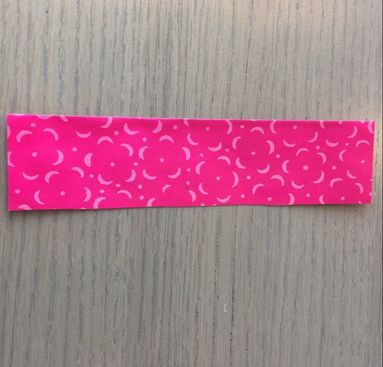
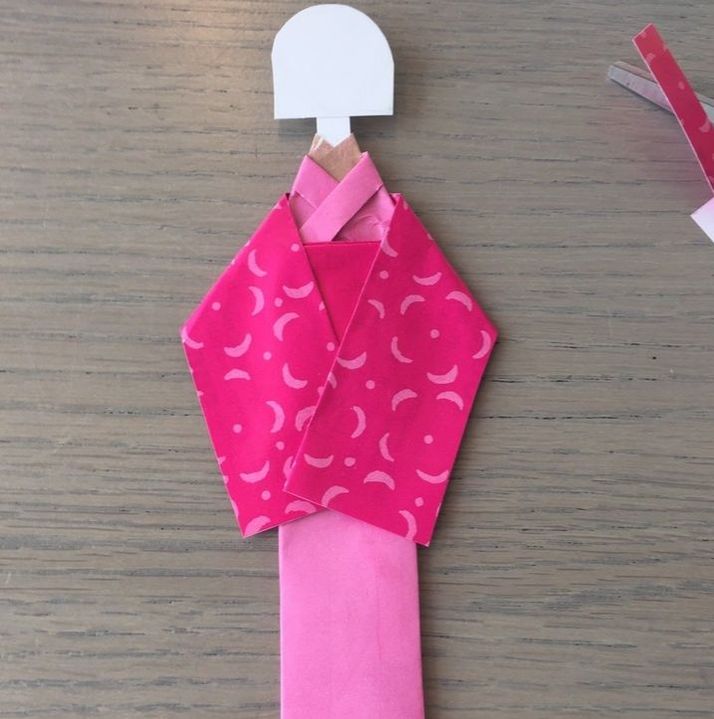
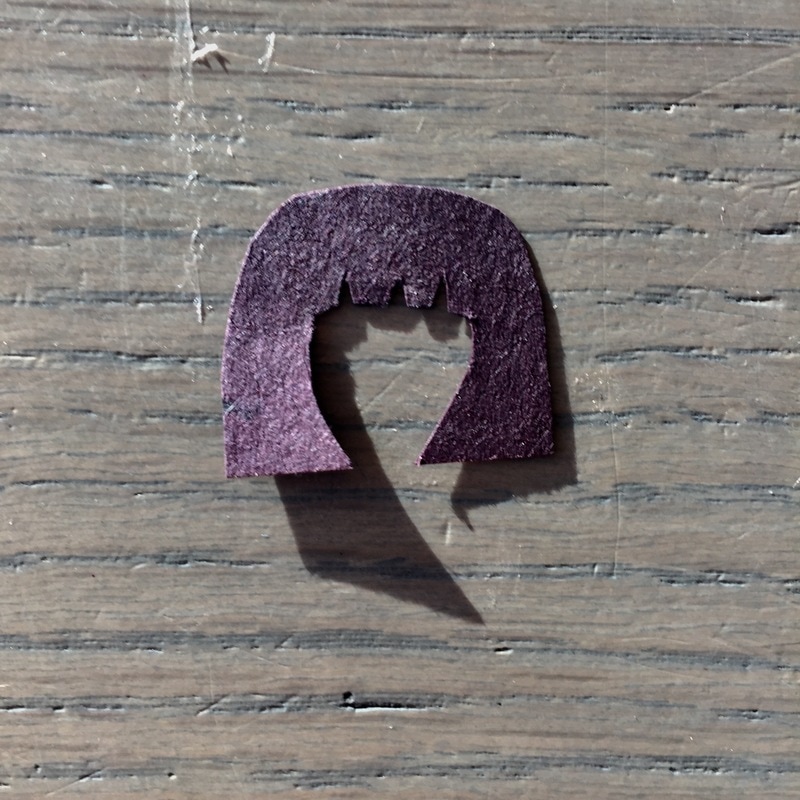
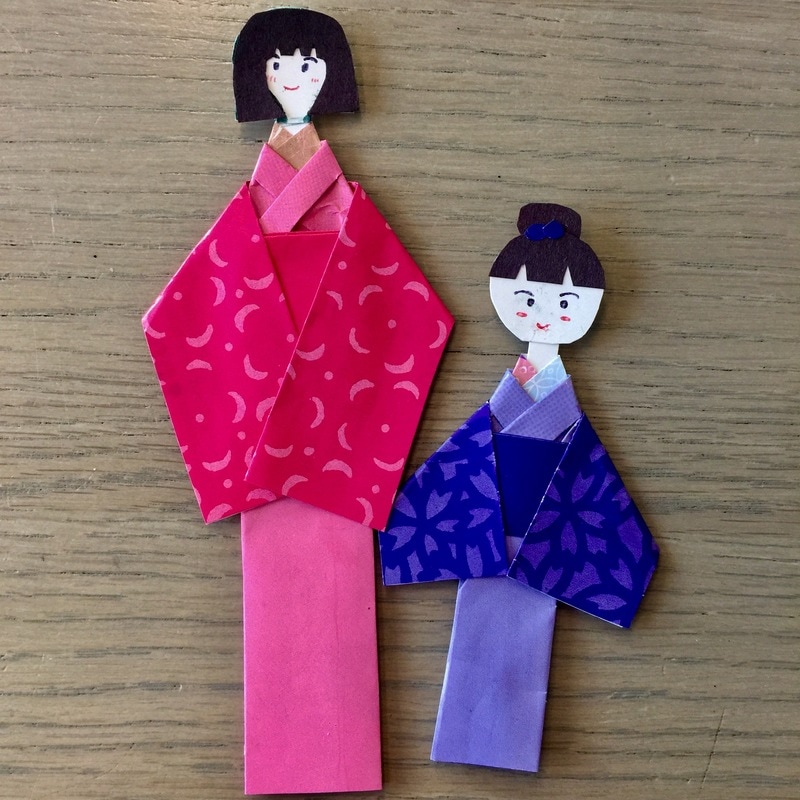
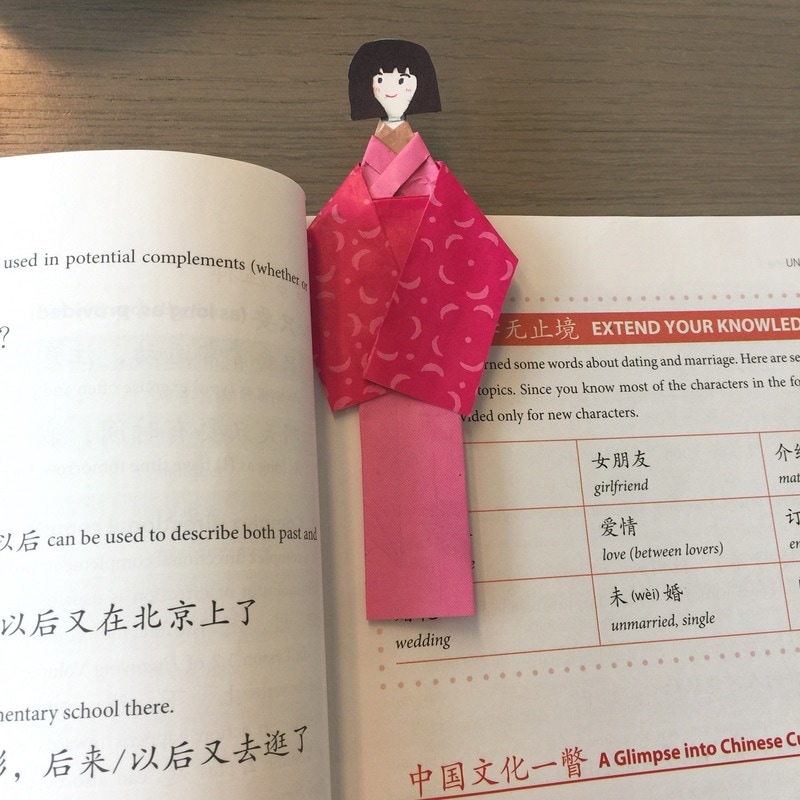
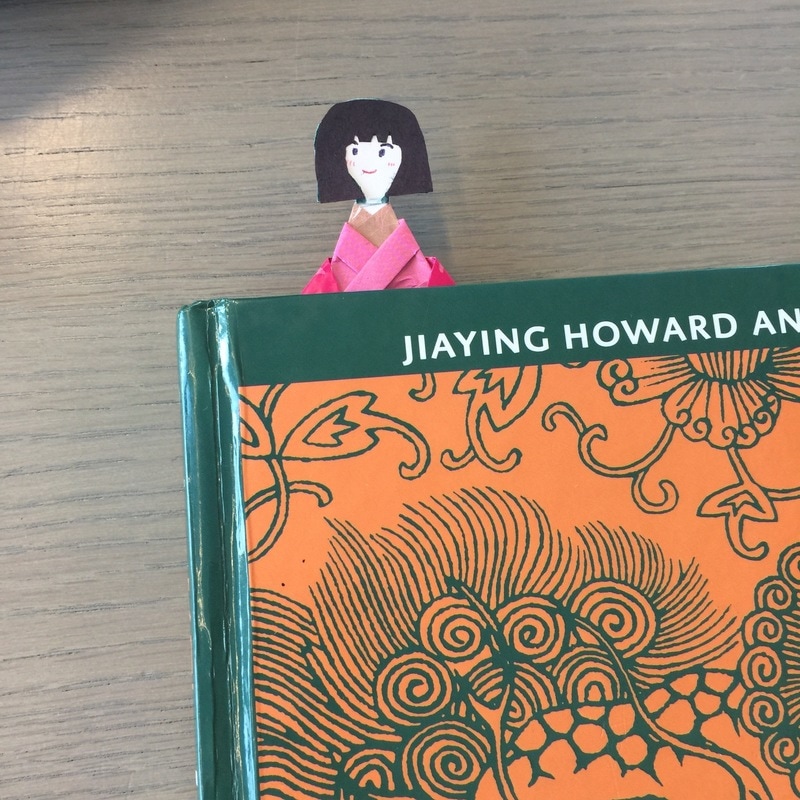
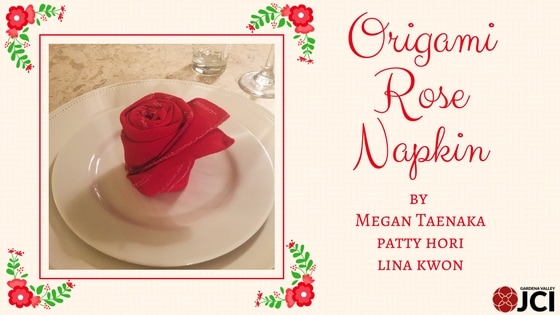

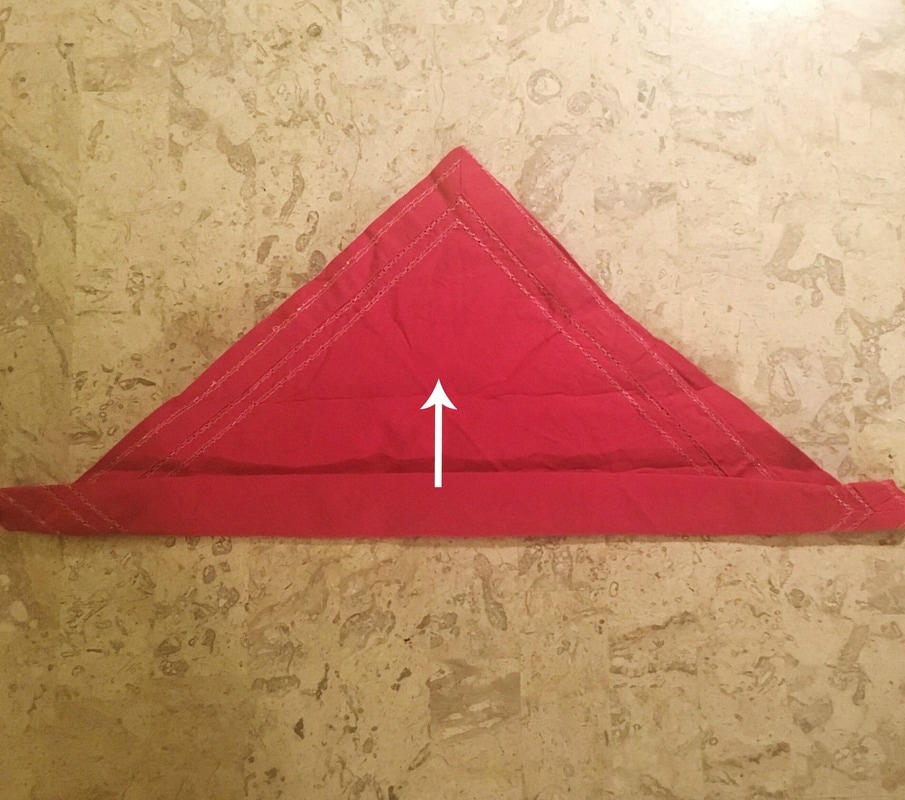
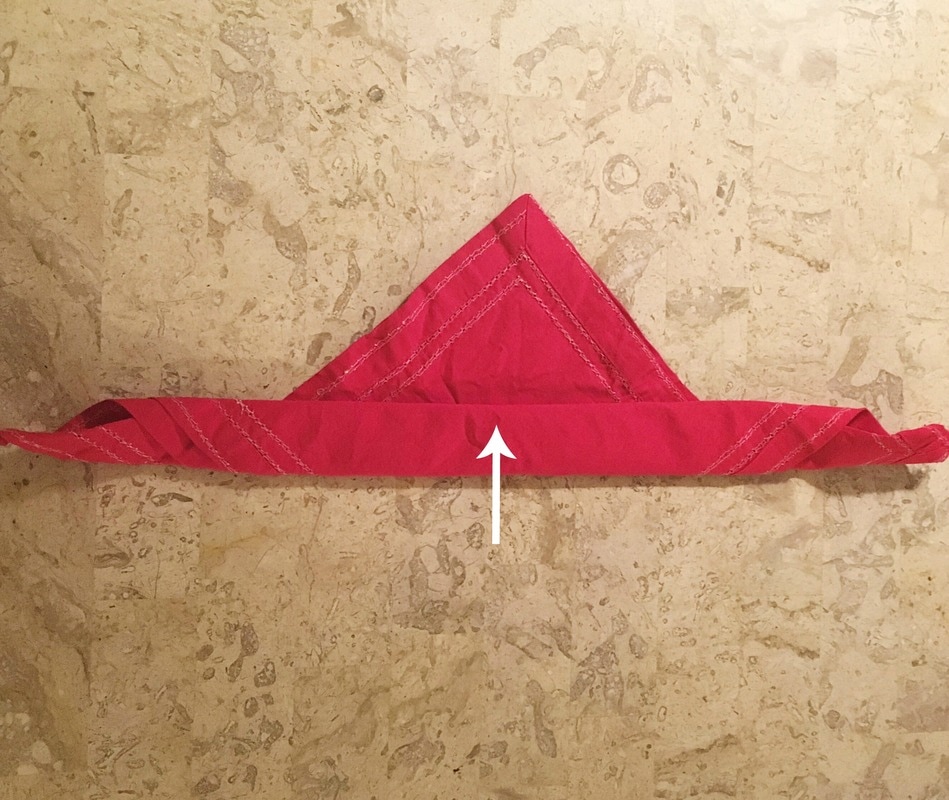
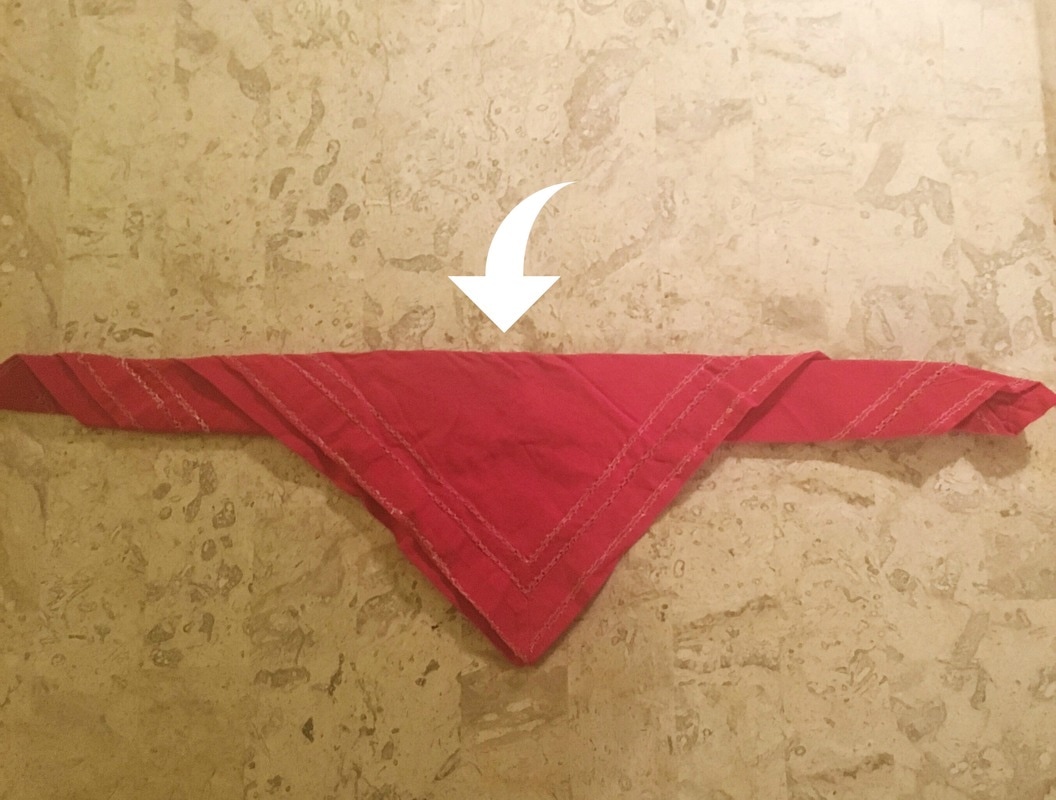
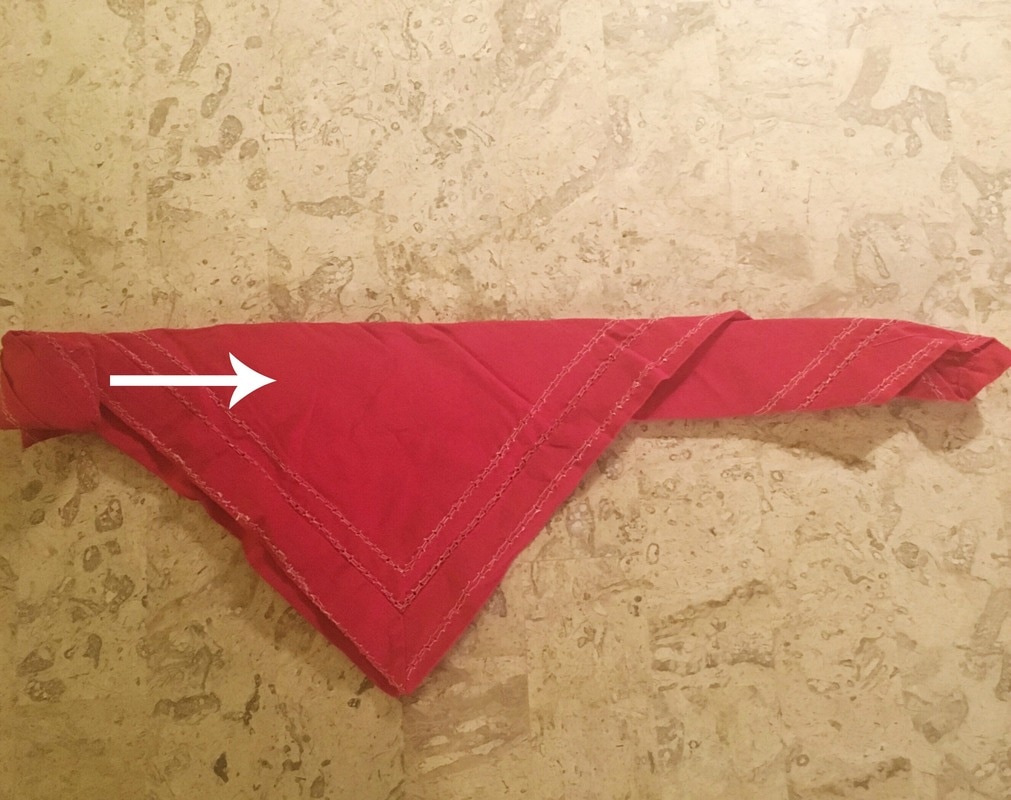
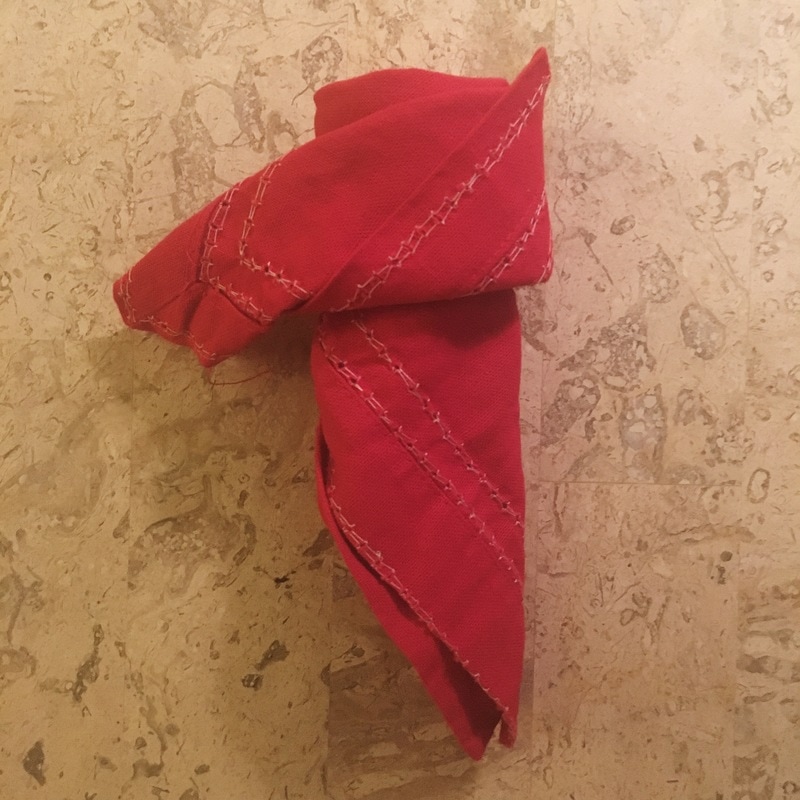
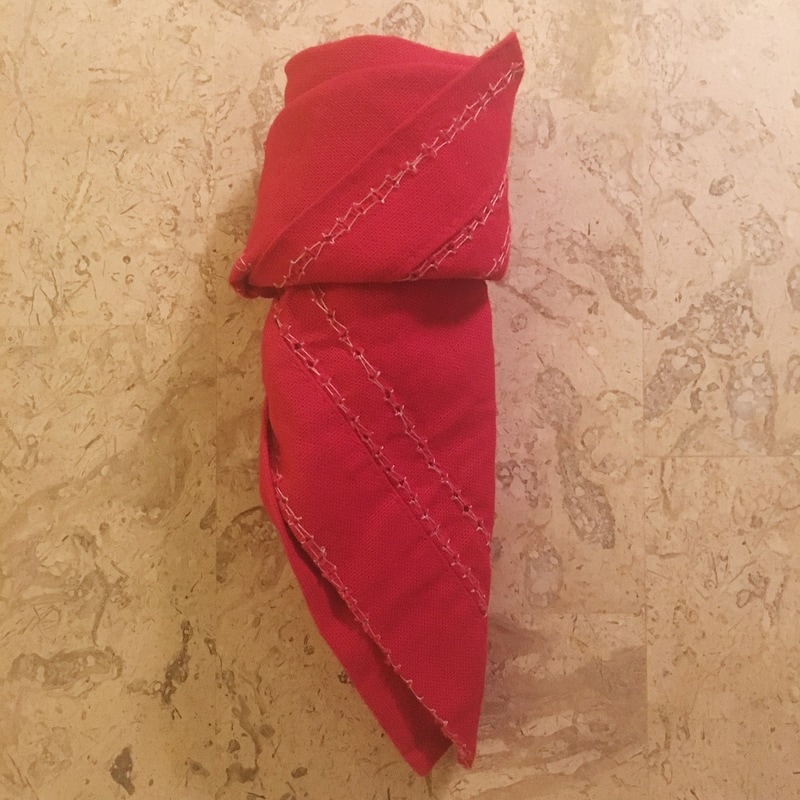
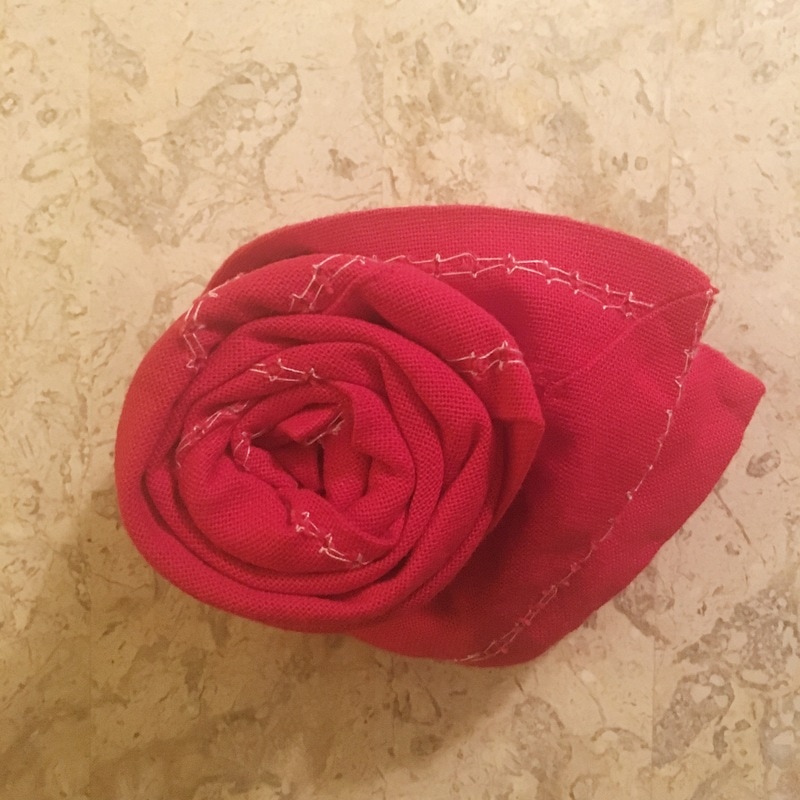
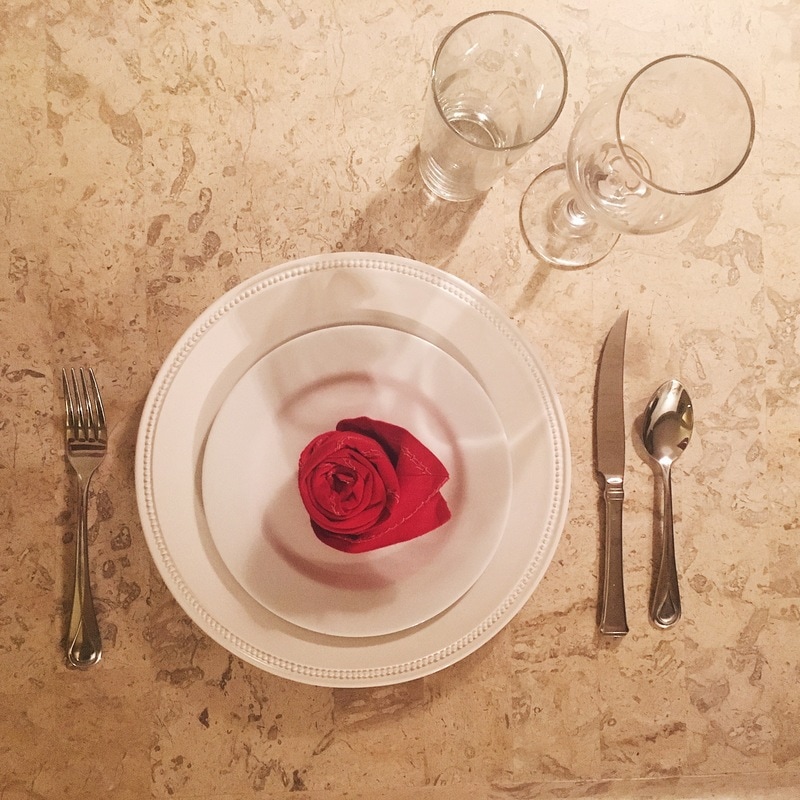
 RSS Feed
RSS Feed
